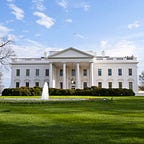A National Monument for Women’s Equality
“May it stand for years and years to come, telling of the work that the women of the United States have accomplished; the example we have given foreign nations; and our determination that they shall be — as ourselves — free citizens, recognized as the equals of men.”
— Alva Belmont, January 4, 1931
Watch President Obama’s remarks live:
Today, on Equal Pay Day, President Obama will designate a national monument in honor of the movement for women’s equality. The new Belmont-Paul Women’s Equality National Monument will protect the iconic house, which served as the National Woman’s Party headquarters , but it will also serve to elevate and amplify the stories, memories, and accomplishments of the many women who passed through its halls — each profoundly dedicated to securing women’s suffrage and equal rights in the United States.
Named for activist and suffragist Alva Belmont, former president of the National Women’s Party, and Alice Paul, the Party’s founder and chief strategist, the monument was originally acquired in 1929 — and quickly became a vital organ in the movement for women’s equality. Women filled its rooms daily, working tirelessly to draft petitions, organize protests, write letters, and provide each other with both the physical and emotional support necessary to sustain each other’s intense commitment.
Leading these advocacy efforts was Alice Paul, who drafted an updated Equal Rights Amendment text, wrote provisions that were later included in the Civil Rights Act to prevent discrimination on the basis of gender, and worked to get women’s equality language incorporated in the U.N. Charter.
“It is incredible to me that any woman should consider the fight for full equality won. It has just begun. There is hardly a field, economic or political, in which the natural and unaccustomed policy is not to ignore women…Unless women are prepared to fight politically they must be content to be ignored politically.” — Alice Paul, 1920
The women’s companionship in their efforts extended long beyond the work day, though. At night, the house transformed into a hotel and second home for many of its members — some slept over only on occasion, but others stayed for nearly their entire lives. (Alice Paul could still be found there, greeting visitors, clear into her 80s.) Many came to think of themselves as family.
Today, the National Woman’s Party serves as an educational organization, seeking to educate the public about both the history of the monument — and the ongoing women’s rights equality movement. In that way, it has played an essential and enduring role in helping the public to follow in the footsteps of women like Alice Paul and Alva Belmont.
That’s just one of the reasons its designation as a national monument is so significant.
“When I got to the house the first time and began to understand the decades long body of work and magnitude of what these people had achieved, I was blown away. The rooms are filled with story after story of events that were incredibly significant in American history.” — Megan Smith, White House Chief Technology Officer
Today’s designation will also permanently protect one of the oldest standing houses near the U.S. Capitol and help preserve an extensive archival collection that documents the history, strategies, tactics, and accomplishments of the movement to secure women’s suffrage and equal rights in the United States and around the globe.
Efforts to protect this site date back to the early 1970s, and more recent proposals to include the site in the National Park System have garnered Congressional support — including bipartisan legislation introduced by Senator Mikulski — as well as strong support from local elected officials, community leaders, women’s organizations, conservation groups and historians.
In addition to protecting more land and water than any President in history — more than 265 million acres — President Obama has sought to protect places that are diverse, culturally and historically significant, and that reflect the story of all Americans. By honoring the history and accomplishments of the movement for women’s equality, today’s designation will build on this effort towards a more inclusive National Park System and tell the story of women’s fight for equality for generations to come. Our national parks and other protected sites that represent America’s diverse history and culture and will continue to be an important priority for the Administration as the country celebrates the National Park Service Centennial this year.
“The National Woman’s Party purchased the house in 1929, making the building its national headquarters. Today, visitors of the Sewall-Belmont House can learn about the women who dedicated their lives to the struggle for women’s rights.” — Congresswoman Rosa DeLauro
The designation of the Sewall-Belmont House as a national historical site ensures that its legacy will endure for generations to come.
The accomplishments and history that the Belmont-Paul Women’s Equality Monument represent resonate deeply during a time when national conversation is focused more than ever on equal rights. And while today’s generation of women have continued to forge ahead, standing on the hard-won accomplishments of the generations before them, there’s still more to be done.
Today’s designation of the Belmont-Paul Women’s Equality National Monument is an important step in solidifying the legacy of the equal right’s movement, but — even more importantly — it’s a way for us to look forward, into a more equal future for all.
